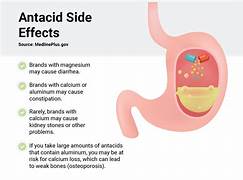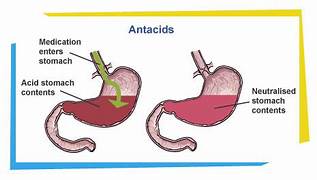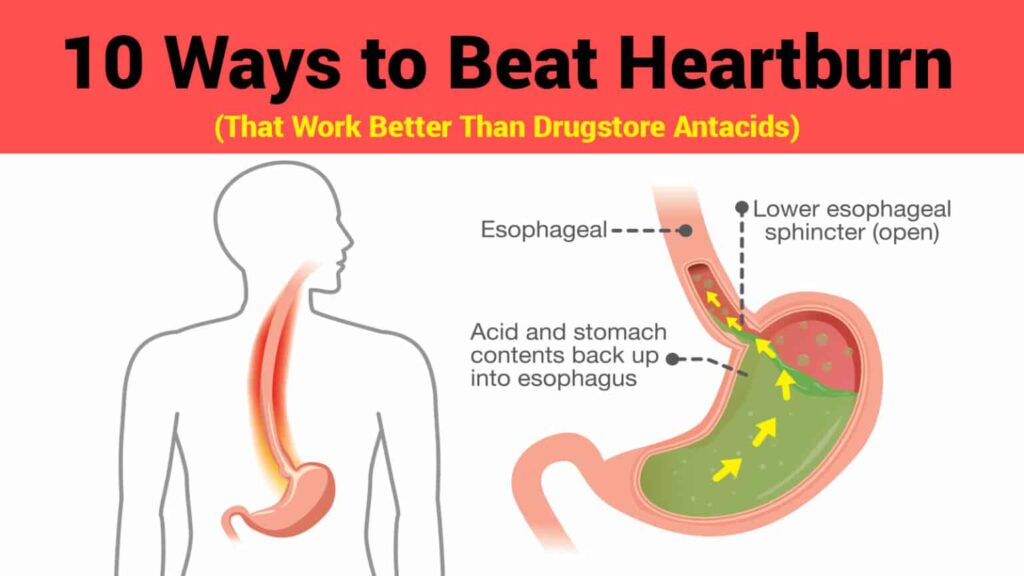Have you ever felt a burning sensation in your chest or throat after consuming a large meal or drinking coffee? Acid indigestion, often known as heartburn, is to blame for that unpleasant sensation. Fortunately, there is a simple solution: antacids. We will look at what antacids are, how they work, and how to use them properly in this post.
What are antacids and how do they work?
Antacids are medications that neutralise stomach acid and hence provide relief from acid indigestion. They operate by decreasing stomach acidity, preventing acid from burning the oesophagus and causing heartburn. Antacids are available without a prescription and are generally regarded as safe for short-term use.

What kind of symptoms can antacids help to relieve?
Antacids can relieve symptoms associated with acid indigestion, including heartburn, sour stomach, and acid reflux. They can also be used to treat symptoms of gastroesophageal reflux disease (GERD) and peptic ulcers.

Some popular antacid brands
There are many brands of antacids on the market, including
- Aciblock
- Tums
- Rolaids
- Mylanta
- Maalox
- Alka-Seltzer
Each brand may contain different active ingredients or combinations of ingredients, so it’s important to read the label and follow the recommended dosage.
What are antacids commonly prescribed by doctors?
Antacids are approved for the treatment of mild to moderate acid indigestion and GERD symptoms. They are not meant for long-term usage, and people with more severe symptoms may need prescription medicine

Can anyone take antacids or are there any restrictions?
Antacids are safe for most people, including pregnant and breastfeeding mothers. Individuals with kidney illness or excessive blood calcium levels, on the other hand, should contact their doctor before using antacids.

What are the different strengths of antacids and how do you choose the right one?
Antacids come in a number of formats, such as tablets, capsules, liquids, and chews. Some forms may be more convenient or appropriate for some people, such as those who have difficulties swallowing pills.
What dosage strengths do antacids come in?
Antacids are available in a variety of dosage strengths, depending on the brand and composition. It is critical to follow the dose instructions on the package or as prescribed by your healthcare provider. Excessive antacid use can result in negative effects.
What are the active ingredients in antacids?
Calcium carbonate, magnesium hydroxide, aluminium hydroxide, sodium bicarbonate, or a mix of these components are active constituents in antacids. Some antacids also include simethicone, which aids in gas relief.
How should an antacid be used for the best results?
Antacids should be taken exactly as instructed on the label or by your healthcare provider. They should be taken after meals or whenever symptoms arise. It is critical not to exceed the specified dosage or take antacids for longer than suggested, as this can result in negative effects.
Are there any possible side effects of using antacids?
When taken as indicated, antacids are generally safe, although they can cause negative effects in some people. Depending on the active component, common side effects include constipation or diarrhoea. Some antacids may also interfere with other medications, so consult your doctor before using antacids if you are taking any other medications.
In conclusion, antacids are a safe and effective way to relieve symptoms of acid indigestion and GERD. They are available over-the-counter and come in a variety of forms and dosage strengths. However, it’s important to follow the recommended dosage and talk to your healthcare provider before taking antacids if you have any underlying health condition.
FAQ about Antacids
Q: What are antacids?
A: Antacids are over-the-counter medications used to alleviate heartburn, acid indigestion, and other stomach discomforts.
Q: How do antacids work?
A: Antacids work by neutralizing stomach acid, which reduces the irritation and discomfort caused by excess acid.
Q: What symptoms can antacids relieve?
A: Antacids can relieve symptoms such as heartburn, acid indigestion, bloating, and upset stomach.
Q: Who can take antacids?
A: Most people can safely take antacids, but people with certain medical conditions should check with their doctor before taking them.
Q: What forms do antacids come in?
A: Antacids come in various forms including tablets, liquids, and chewable tablets.
Q: What dosage strengths do antacids come in?
A: Antacids come in different strengths, and the dosage varies depending on the brand and the severity of symptoms.
Q: What are the active ingredients in antacids?
A: The active ingredients in antacids include aluminum hydroxide, magnesium hydroxide, calcium carbonate, and sodium bicarbonate.
Q: How should you take antacids for best results?
A: Antacids should be taken as directed on the label, typically after meals or when symptoms occur.
Q: Are there any potential side effects of using antacids?
A: While generally safe, antacids can cause side effects such as constipation, diarrhea, and stomach cramps. People with kidney disease should avoid antacids containing aluminum.
